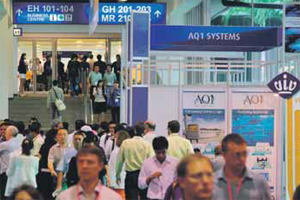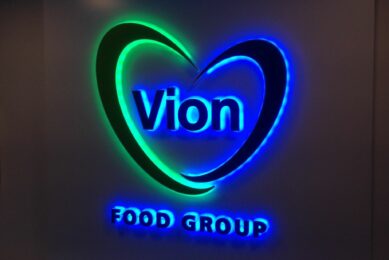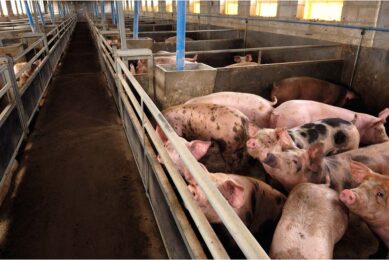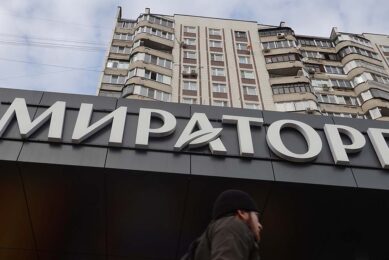News for the Far East: Stop seeing pork as a commodity

Where the Western world continues to struggle with its financial crisis, VIV Asia 2013 showed once more that growth is to be found ?elsewhere. The ascent of the East comes with new challenges and responsibilities. For pork production, Dr Robert van Barneveld, Australia, summarised these.
Assume that the Far East stretches from Japan to Papua New Guinea and from Myanmar to the Philippines. In that case, the area houses almost 2.2 billion people – a number that is rapidly growing – and the majority like their pork better than any other meat. That, in short, are the conditions for a blossoming market, which could be felt in every aspect of VIV Asia 2013, be it at the showground or its seminars.
With continuous growth also comes challenges and responsibilities, said Dr Robert Van Barneveld, Barneveld Nutrition and Becan Consulting Group, Australia at VIV Asia. He was one of the lead speakers at the trade show’s main conference. He summed up the main challenges for pork production in this vast area for the next 20 years. Most remarkable in his story – a
call for a change to the premise of ‘abundance’ in Asia.
Key issues
Van Barneveld started off globally, gradually focusing in on Asia. He
mentioned the well-known expected 70-100% increase in food requirements by 2050, the prospect of resource scarcity and the capacity for trade.
Then, zooming in on Asia’s demography and market trends, he reminded the audience of the rapid mode of change – population growth, increased meat
consumption, increased urbanisation, and more attention for food safety and animal welfare. Zooming in more – what kind of ‘general’ picture can be drawn of present-day swine production in Asia? He characterised this as follows:
- A tendency for larger-scale production systems – from backyard production
- Bagged feed delivery
- Increased use of technology – i.e. less labour
- Use of superior genotypes
- Mainly corn-based diets
- Flagrant use of antibiotics
- Disjointed supply chain
- High volatile supply, demand and price – see also the articles on pages 18 and 26.
Against this background, a profound change towards pork production will be inevitable, he said – after all, pork
production requires substantial amounts of land, water, nutrients, labour, capital, wealth and may have environmental effects as well. Van Barneveld said: “Without a significant change in attitude, approach and focus, the comparative value of pork in the Asian food chain will diminish.”
In effect, this means a fundamentally different approach to swine production. No more freewheeling, but thinking properly about strategies to be efficient and sustainable. This could happen by reducing the reliance on corn, by using energy more efficiently and to reduce the reliance on scarce resources. On top of that, Van Barneveld touched on issues that in many Asian countries can still be improved – like disease control, better animal welfare, safer food, and productivity and efficiency
in general.
Sustainability
Livestock production, Van Barneveld said, needs to contribute to net food supply rather than compete for resources. Pork production, in this bigger picture, should not be a commodity – on the contrary. He described ‘default’ pork production as: “Intensive, efficient, capital-reduced, welfare friendly production based on co-products, waste streams and downgraded grain surpluses with the capacity to
utilise effluent streams for energy, nutrients and water recycling.” Compare that to the current situation!
So – how to do that, producing sustainably? In one of those fascinating series of numbers and figures, he told that 2.5% of Planet Earth’s water is fresh – and then 70% again of that water is in ice caps. Of the remainder, 80% is used for irrigation. Oil (46.2 years of reserves), natural gas (58.6 years) and coal (188 years) still offer some reserves, but they are not endless. Alternative inputs for pork production could be:
- Dedicated feed crops, not necessarily grains – offering high yield, drought tolerance, disease tolerance etc; providing high energy; and do not compete with the human food market; growing on marginally arable land
- Damaged and degraded food crops
- Co-products, like millrun, bran, pollard, middlings, oilseed meals, processed food production waste, animal protein meals, refinery co-products and animal fats. He also mentioned that the pork production itself may make steps towards this by moving closer to urban areas and improving its water removal from waste streams.
Sustainable inputs would also be the use of mixotrophic algae production. The Chlorella species can utilise excess nitrogen and phosphorus and can be fed through a liquid feeding sytem in conjuction with concentrates. A
co-culture of algae, bacteria, yeasts and fungi, he also mentioned, calling it ‘microbial biomass’. He mentioned phosphate alternatives, mentioning phytase, meat and bone meals and algae.
Controlling disease
Impacts of controlling diseases are more far-reaching than one may think at the first glance. Disease outbreaks have impact on situations of supply, demand and price, as well as the cost of production and competitiveness, the return on investment, food safety and human health – and also on animal welfare.
Controlling disease has been subject to challenges, both coming from society as well as from Mother Nature. Of course, new diseases will show up
from time to time – but on top of that, society is increasingly asking questions resulting in new regulations in the West – and it is likely that some or most of these will affect the Far East as well. This includes no use of antibiotics as growth promoters; no use of ‘last line’ human antibiotics for therapy of animals; hygiene issue; proximity and number of production units; stock movements locally and internationally.
Animal welfare
Just like in disease control, animal
welfare issues may not be prevalent in Asia that strongly – but this may change, Van Barneveld said. He pointed out group housing of sows, a trend in Europe and Australia – and the US is following. A more sophisticated
management is required as the new systems should meet the varying nutritional requirements of the individual sows; larger and/or dominant sows have to be managed in terms of over-feeding – and also pork producers will be confronted with satiety and associated interactions.
Safe food
Food safety will become an issue in Asia – and sometimes is, as food
prices have gone up and down for
various reasons. Contaminants like bacteria but also chemicals may have a detrimental impact on animal health and food safety – but what to think of metabolic modifiers like ractopamine, antibiotics, genetically-modified
organisms used in food?
Productivity and efficiency
A simple table sufficed to show that there are huge differences to be achieved with the right efficiency and productivity methods. Only by comparing production figures from several developed pork production markets, like Australia, USA, Canada, Brazil, Denmark and the UK – huge differences could be seen. Denmark, for instance, scores highest in recent research with an average of 2,173 kg of pork produced per sow per year – compared to 1,687 kg in the UK. Brazil came second, scoring better (2,099 kg) than the USA (2,086) or Australia (1,793).
World to win
There is a world to win, Van Barneveld said in conclusion – it’s not a matter of choice. If swine production in Asia would like to remain of paramount importance, it needs the mentality
and attitude change. He has begun by telling the first listeners at VIV Asia – now who is going to tell the other
2.2 billion people?
| VIV Asia 2013 breaks records VIV Asia 2013, held March 13-15 in Bangkok, Thailand, was another record-breaking edition. The show, now housed in all six halls of the Bangkok International Trade & Exhibition Centre (BITEC) attracted 770 exhibitors from 48 countries, who were able to present themselves to 33,229 visitors from 118 countries. In both exhibitor and visitor aspects, the results broke records. The last and hitherto largest edition, in 2011, attracted 28,978 visitors and 682 companies. Most visitors this year came from Thailand (43%), followed by Vietnam (6%), Indonesia, Philippines and India (all between 5-6%). The majority of visitors (74.8%) indicated to be interested in the poultry sector, followed by the pork sector (50.8%). |
| China: No linear growth Another surprising insight was shared by Rabobank’s Daron Hoffmann, director of food & agribusiness. Drawing the bigger picture of Asia’s agricultural economy, he said that China’s industrialised slaughter capacity is growing, but local market slaughter is not giving way, resulting in a sub-optimal use of professional capacity of only 40% in some regions and lively meat trade at traditional local markets. Hoffmann said: “The Asian trend is towards industrialisation, but it is not a linear trend.” Nevertheless, the industrialisation of the Chinese meat industry is driving big changes in livestock production. Traditional small producers supply local markets, but they are not capable of guaranteeing a steady and uniform enough stream of live animals to new slaughterhouses. |
Join 18,000+ subscribers
Subscribe to our newsletter to stay updated about all the need-to-know content in the pigsector, three times a week. Beheer
Beheer










 WP Admin
WP Admin  Bewerk bericht
Bewerk bericht